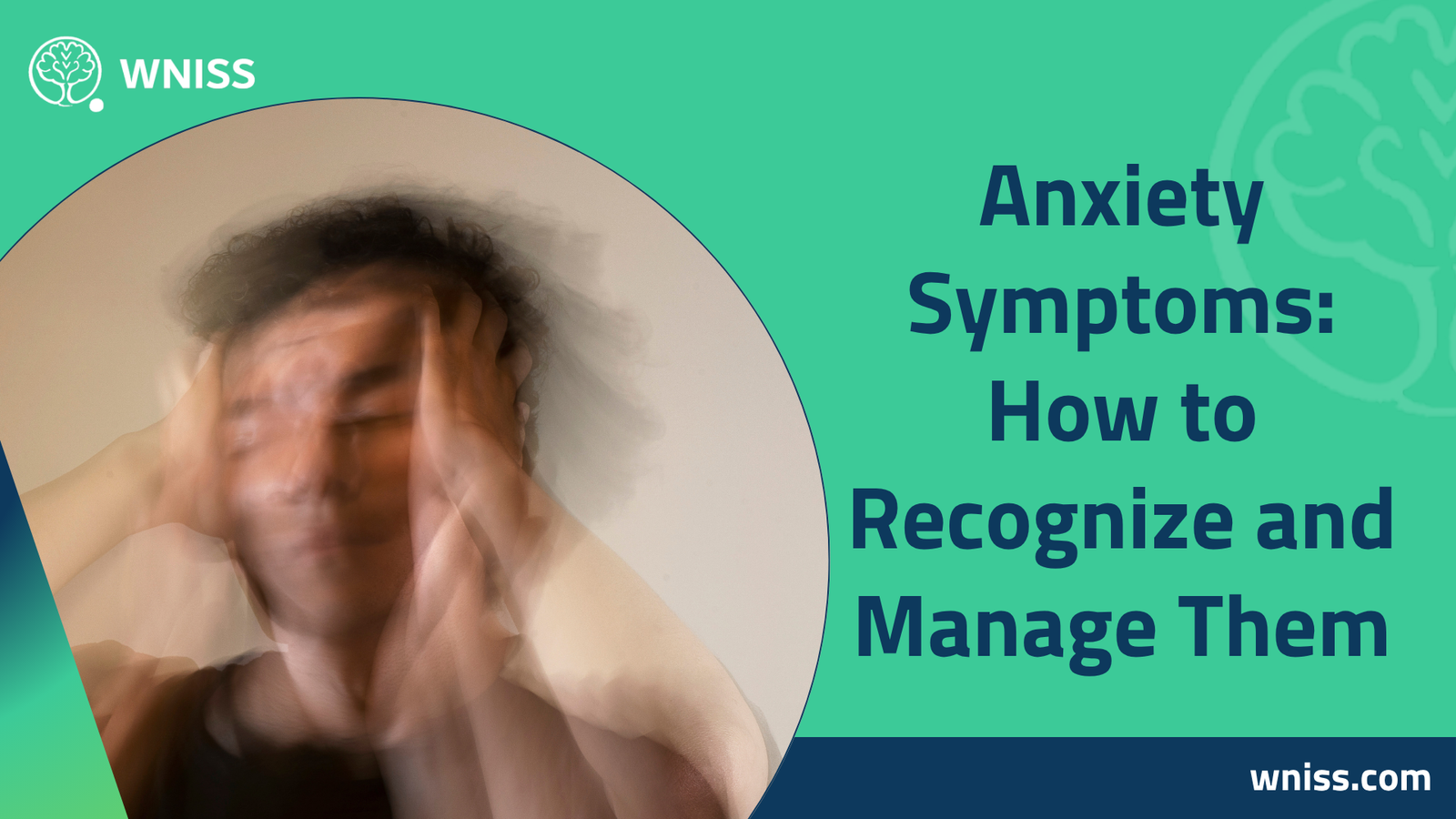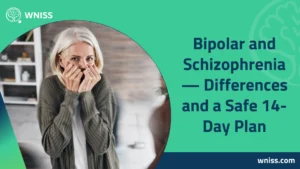In today’s fast-paced world, millions of people experience anxiety symptoms at some point in their lives. While it is normal to feel anxious occasionally due to life’s inevitable stressors, persistent or excessive anxiety can become a debilitating condition that severely impacts daily functioning. Recognizing the early warning signs is crucial to managing anxiety effectively before it escalates into more severe forms. The most common anxiety symptoms include persistent worry, nervousness, restlessness, rapid heart rate, and difficulty concentrating. However, the complexity of anxiety extends far beyond these general signs, affecting individuals both emotionally and physically.
It is important to understand that anxiety symptoms often manifest differently in each person. For instance, while some individuals may experience acute physical discomfort, others may suffer more intensely from psychological distress. Moreover, what distinguishes anxiety from normal stress is its persistence and the way it disrupts everyday activities. Instead of acting as a short-lived response to a specific situation, anxiety symptoms linger, becoming a constant burden that overshadows every aspect of life, whether personal or professional.
Complicating matters further, anxiety symptoms can mimic other medical conditions such as heart problems or thyroid disorders. Therefore, recognizing the full range of physical and emotional indicators is vital to seek proper help. Importantly, learning how to differentiate between general nervousness and clinically significant anxiety symptoms ensures that affected individuals can access appropriate treatment promptly.
Exploring the Definition of Anxiety: Beyond Temporary Stress
Before addressing how to manage anxiety symptoms, understanding the definition of anxiety is essential. Anxiety refers to the body’s natural response to stress, typically characterized by apprehension or fear about future uncertainties. While such a reaction can be protective in dangerous situations, when anxiety becomes chronic or disproportionate to actual threats, it evolves into a serious mental health concern.
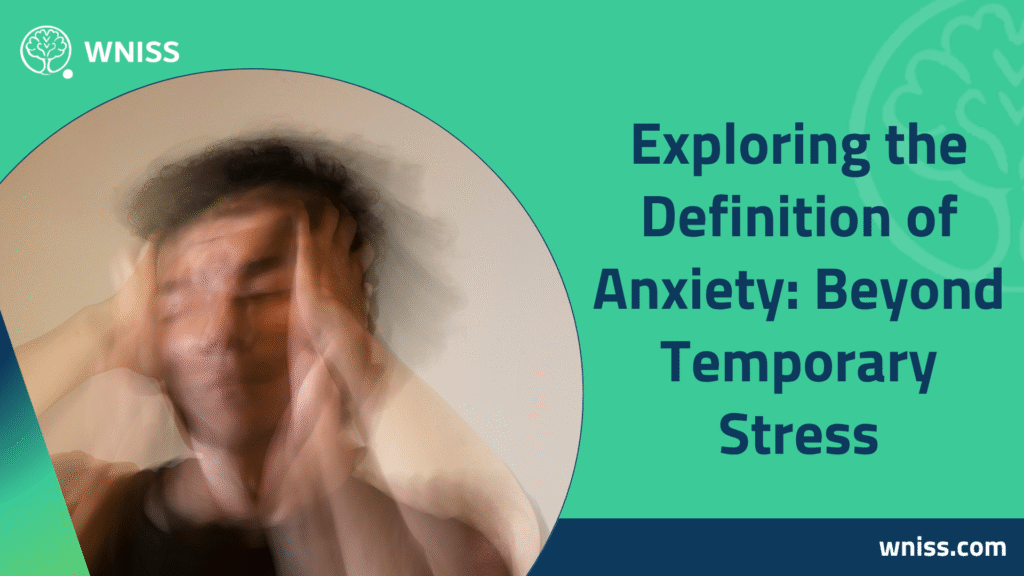
The definition of anxiety extends to encompass various psychological and physiological responses that interfere with normal functioning. Unlike a fleeting moment of fear, chronic anxiety can paralyze individuals emotionally and physically. It is this distinction that highlights the importance of addressing anxiety not as a transient emotion but as a complex mental health condition requiring proper attention and care.
Delving into the Types of Anxiety and Types of Anxiety Disorders
A critical aspect of understanding anxiety symptoms is exploring the various types of anxiety and types of anxiety disorders, each presenting unique challenges:
- Generalized Anxiety Disorder (GAD): This common form involves chronic worry about everyday matters such as health, finances, or relationships, persisting for six months or more.
- Panic Disorder: Characterized by sudden episodes of intense fear accompanied by physical symptoms like chest pain, shortness of breath, and dizziness.
- Social Anxiety Disorder: This form manifests as an intense fear of social situations, often leading to avoidance behaviors that hinder professional and personal growth.
- Specific Phobias: Individuals experience irrational fears of specific objects or situations, such as heights or flying.
- Obsessive-Compulsive Disorder (OCD): Although sometimes classified separately, OCD involves anxiety-driven obsessions and compulsions.
- Post-Traumatic Stress Disorder (PTSD): Resulting from traumatic experiences, PTSD is marked by flashbacks, nightmares, and heightened anxiety responses.
Recognizing the differences between these types of anxiety and types of anxiety disorders allows for tailored treatment approaches, as each requires specific strategies for effective management.
Identifying the Root Causes of Anxiety
While exploring anxiety symptoms, understanding the causes of anxiety is equally vital. Anxiety does not emerge from a single source; instead, it results from a combination of genetic, psychological, and environmental factors. Among the most prevalent causes of anxiety are:
- Genetic Predisposition: A family history of anxiety or other mental health disorders increases the likelihood of developing anxiety.
- Brain Chemistry Imbalances: Disruptions in neurotransmitters such as serotonin and dopamine affect mood regulation, contributing to chronic anxiety.
- Trauma or Stress: Past experiences, including abuse, neglect, or traumatic events, significantly heighten vulnerability to anxiety disorders.
- Medical Conditions: Chronic illnesses, hormonal imbalances, and heart or thyroid disorders can manifest as anxiety symptoms.
- Substance Abuse: The misuse of alcohol, drugs, or caffeine can exacerbate existing anxiety or even trigger its onset.
- Personality Traits: Perfectionists or individuals with low self-esteem often experience higher anxiety levels due to internal pressures.
Acknowledging these causes of anxiety assists in formulating targeted treatment plans and preventive strategies that address both the symptoms and the root contributors of this pervasive condition.
Recognizing Anxiety Physical Symptoms and Emotional Distress
Although many perceive anxiety as purely emotional, anxiety physical symptoms are often the most noticeable and distressing for sufferers. Physical manifestations not only disrupt day-to-day activities but also contribute to the false belief that one is suffering from a severe physical illness. Common anxiety physical symptoms include:
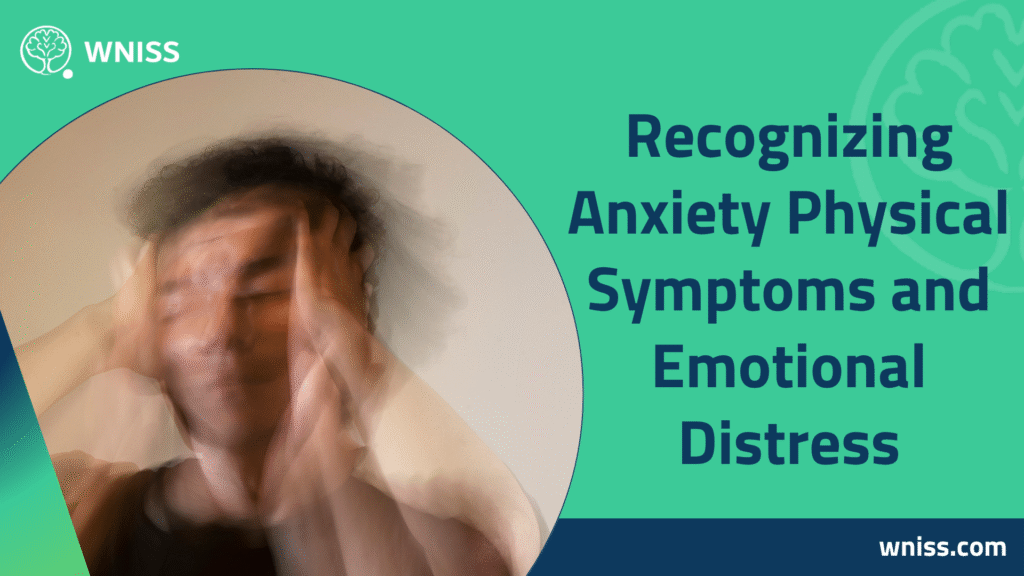
- Rapid heartbeat or palpitations
- Shortness of breath or hyperventilation
- Muscle tension and aches
- Sweating excessively, even without exertion
- Trembling or shaking
- Gastrointestinal issues, such as nausea or diarrhea
- Lightheadedness or dizziness
- Headaches and migraines
- Insomnia or restless sleep
Understanding anxiety physical symptoms is critical, as these signs often prompt individuals to seek emergency medical care, fearing a heart attack or other critical condition. Therefore, educating individuals about how anxiety affects the body can help reduce fear and facilitate timely mental health interventions.
The Treatment of Anxiety Disorders: Managing Symptoms Effectively
Once diagnosed, the treatment of anxiety disorders typically involves a combination of therapeutic strategies designed to alleviate both emotional and physical symptoms. Effective treatment of anxiety disorders often includes:
- Cognitive Behavioral Therapy (CBT): This form of psychotherapy helps patients identify and challenge irrational thought patterns contributing to anxiety.
- Medication: Antidepressants such as SSRIs and benzodiazepines may be prescribed to help manage severe symptoms.
- Mindfulness and Meditation: Practicing relaxation techniques can reduce overall anxiety levels, helping individuals remain grounded during high-stress situations.
- Exercise: Physical activity boosts endorphins and improves mood, acting as a natural anxiety reducer.
- Dietary Changes: Reducing caffeine and sugar intake while ensuring a balanced diet supports mental well-being.
- Support Groups: Sharing experiences with others facing similar struggles offers emotional support and practical coping strategies.
The comprehensive treatment of anxiety disorders involves addressing both immediate symptoms and underlying causes, ensuring long-term management and improved quality of life.
Strategies to Cope Anxiety in Daily Life
Learning to cope anxiety on a day-to-day basis is essential for preventing relapses and maintaining emotional stability. Practical strategies to cope anxiety include:
- Deep Breathing Exercises: Slow, controlled breathing activates the parasympathetic nervous system, reducing stress responses.
- Journaling: Writing down anxious thoughts allows individuals to analyze and address their worries more rationally.
- Establishing Routines: Structured daily schedules reduce uncertainty, which often exacerbates anxiety.
- Progressive Muscle Relaxation: Alternating muscle tension and relaxation reduces physical symptoms of anxiety.
- Seeking Professional Help When Needed: Consulting mental health professionals ensures ongoing support and guidance.
By implementing these techniques consistently, individuals can cope anxiety more effectively, reducing its interference with everyday life.
The Connection Between Symptoms of Depression and Anxiety Disorders
It is essential to acknowledge the overlap between symptoms of depression and anxiety disorders. Many individuals suffering from chronic anxiety also exhibit symptoms of depression, such as persistent sadness, loss of interest in activities, and feelings of hopelessness. The co-occurrence of these conditions, known as comorbidity, often complicates diagnosis and treatment. Addressing both symptoms of depression and anxiety simultaneously is crucial for a comprehensive treatment approach, ensuring neither condition remains untreated.
FAQs About Anxiety
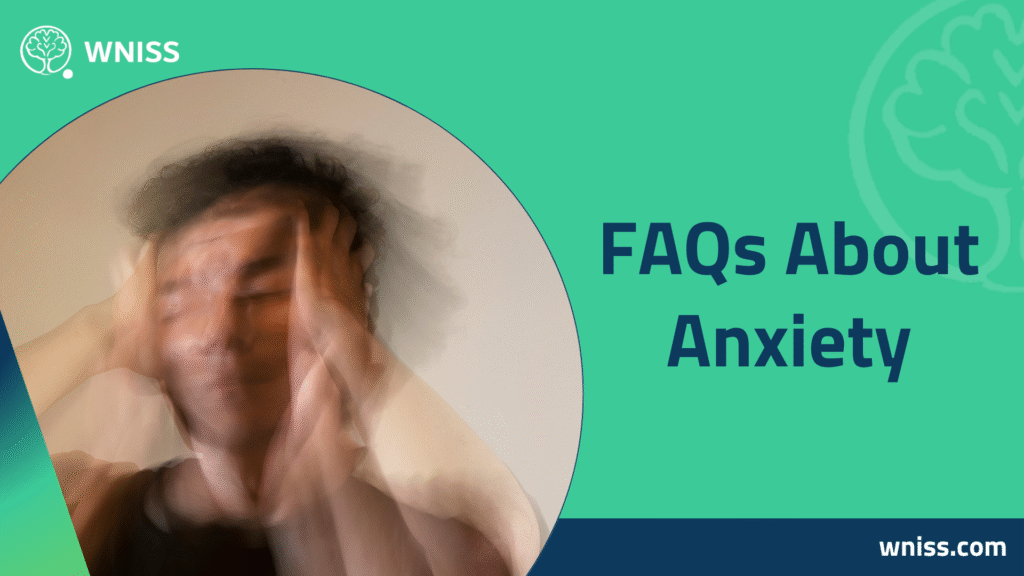
What are the 5 main symptoms of anxiety?
The 5 main anxiety symptoms are:
- Persistent and excessive worry about various aspects of life.
- Physical restlessness or inability to relax.
- Rapid heartbeat or palpitations.
- Difficulty concentrating due to overwhelming anxious thoughts.
- Sleep disturbances, including insomnia or restless nights.
These symptoms often appear together and can vary in intensity, requiring prompt management to prevent escalation.
How do I beat anxiety?
To beat anxiety, it’s essential to combine professional treatment with self-help strategies. Cognitive Behavioral Therapy (CBT), medication when necessary, regular physical activity, mindfulness techniques, structured daily routines, and building a supportive social network all contribute to reducing anxiety symptoms. Early intervention and consistency in treatment significantly improve outcomes.
How to control health anxiety?
Controlling health anxiety involves understanding and addressing irrational fears about physical health. This includes cognitive restructuring through therapy, reducing time spent researching health issues, engaging in regular relaxation practices, and focusing on factual health assessments rather than hypothetical worst-case scenarios. Consulting healthcare providers for reassurance without overusing medical services is equally important.
How to accept anxiety?
Acceptance involves recognizing anxiety as a natural response rather than an enemy to be eliminated. Mindfulness practices, accepting uncomfortable thoughts without judgment, and learning that anxiety does not define one’s identity are key steps. Embracing anxiety as part of the human experience reduces resistance and minimizes its control over one’s life.
How can I confirm if I have anxiety?
Confirmation requires a professional evaluation by a mental health expert. However, persistent emotional distress, frequent anxiety physical symptoms, and interference with daily activities strongly suggest the presence of anxiety. Screening tools like the Generalized Anxiety Disorder 7-item scale (GAD-7) can provide preliminary insights before seeking professional confirmation.
What is the 3 3 3 rule for anxiety?
The 3 3 3 rule is a simple grounding technique to help manage anxiety during acute episodes:
- Look around and name three things you see.
- Identify three sounds you hear.
- Move three parts of your body (such as fingers, arms, or legs).
This exercise diverts attention from anxious thoughts and brings focus back to the present moment.
In conclusion, understanding anxiety symptoms along with the definition of anxiety, types of anxiety, types of anxiety disorders, causes of anxiety, anxiety physical symptoms, strategies to cope anxiety, and recognizing overlapping symptoms of depression is essential for anyone struggling with chronic worry and stress. Addressing anxiety early through appropriate treatment of anxiety disorders and adopting coping strategies not only enhances mental health but also significantly improves quality of life. By seeking professional help and using practical daily techniques, individuals can reclaim control, overcome the paralyzing effects of anxiety, and lead a balanced, fulfilling life.

